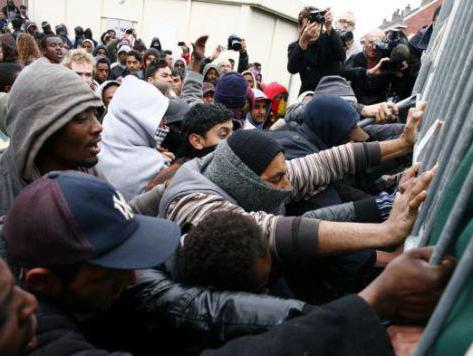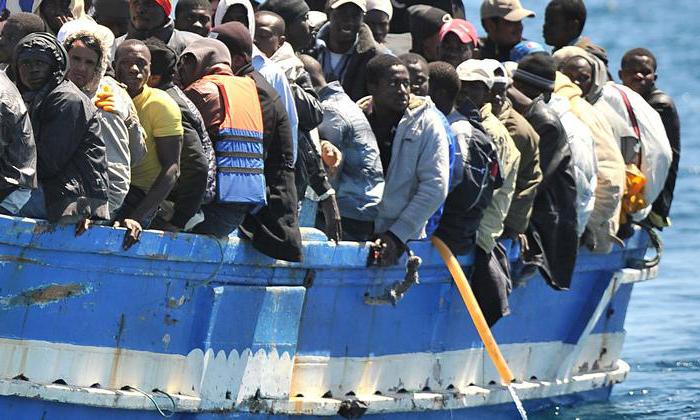Many are familiar with the concept of "immigrant." This definition came from the latin language. It characterizes the movement of the population from one country to another. The meaning of the word “immigrant” can be defined as “newcomer”. Let us further consider the features and causes of such a movement of citizens. 
History reference
Immigration was of particular importance in the process of settling the planet. Movement of people has influenced the formation of the structure and dynamics of the population in many countries of the world. Among the immigrants, most are middle-aged and young men. Entry into the country of citizens of other states leads to the formation of new nationalities due to the mixing of different ethnic groups. People moved at all times. The most large-scale migrations that have occurred over the past 2000 years include:
- The Great Migration in Europe (IV-VII centuries).
- Arab conquests (VII-VIII centuries).
- The expansion of the Mongolian and Turkic peoples (XI-XVII centuries).
- Intercontinental movements during the time of the Great geographical discoveries (in the middle of the XV-XVII centuries).
- The repatriation of Jews to Israel.
Immigrants in Russia began to appear during the time of Peter. Displacement continued until the 1920s. last century. The initial cause of immigration was the growth of the country. At that, only residents who came from Europe were understood as foreigners. In the twentieth century, the situation has changed somewhat. A massive influx of population into Europe was noted. After the end of World War II, repatriation of citizens from the former colonies of Belgium, the Netherlands, France, and Great Britain took place. By the 80s of the last century, the share of the population who came from other countries amounted to 10%. 
Emigrant and immigrant
The difference between these concepts is in the direction of the movement of people. Citizens of the country can leave it. In this case, they will be immigrants. These people, leaving one state, enter another. For the host country, each of them is an immigrant. This phenomenon can be caused by various reasons. Some people leave their country due to political or religious persecution. For example, the French Huguenots left during the time of Louis XIV in America, Holland, England, Protestants left Salzburg. In the 19th century, emigrants were mainly considered representatives of the nobility who fled from France during the Great Revolution. In the 20th century, this country, on the contrary, began to receive hundreds of thousands of citizens who left different countries. 
Political immigrant
This is a person who leaves his country due to external and internal conflicts, legal and political instability. Over the past few years, approximately 13 million citizens have left their countries, seeking refuge from persecution and armed conflict. Most of the political immigrants appeared in the early 90's. last century. The increase in their number was due to the end of the Cold War, the collapse of the USSR, the aggravation of interethnic conflicts, and civil wars. At that time, huge masses of the population began to travel from Africa, Asia, Eastern Europe, Yugoslavia to the West.
Economic motive
In this case, every immigrant is a person of working age who seeks to go to another state in search of a more paid job. Such people leave because of the unstable economic situation in their homeland, accompanied by crises, inflation, unemployment. Such movements occur with a large gap in the living standards of the population of developing and developed countries.Many researchers call the economic factor decisive among the driving forces of immigrant flows. 
Present
At the end of XX - beginning of XXI centuries. the rate of immigration has not decreased. The main movements include:
- Relocation of citizens due to the collapse of Yugoslavia and the USSR.
- Relocation from the countries of South Asia, Africa, Latin America to the more developed states of North America and Western Europe.
- Migrations due to local hostilities.
From 1997 to 2005, there was a steady decline in the rate of migration to Russia. With 2005 statistics, there has been some increase in the number of immigrants. Currently, most citizens come from the territory of Uzbekistan, Kazakhstan, Kyrgyzstan, Moldova, Azerbaijan, Armenia. Immigration reached its peak in 2008-2011. Citizens of neighboring countries came to the Russian Federation mainly for economic reasons. In connection with the rapid growth in the number of visitors, the procedure for the stay of foreign citizens in the state was established at the legislative level. Legal immigrants must go through the registration process and receive documents of an established form. Citizens who violate this regime are expelled from the country. 
Conclusion
Many countries currently have special immigration quotas and restrictions. Migrants from other countries play an important role in the economic development of the host state. The influx of labor has both pros and cons. Among the advantages can be called the fact that visitors are ready to take up any work and often for a small fee. At the same time, local residents are less and less willing to find a job in the country's enterprises. As a result, the number of unemployed state citizens begins to increase. In addition, terrorists hiding from political persecution at home can become immigrants. This poses a significant threat to the security of the local population.